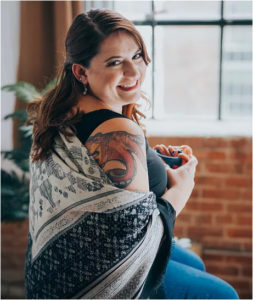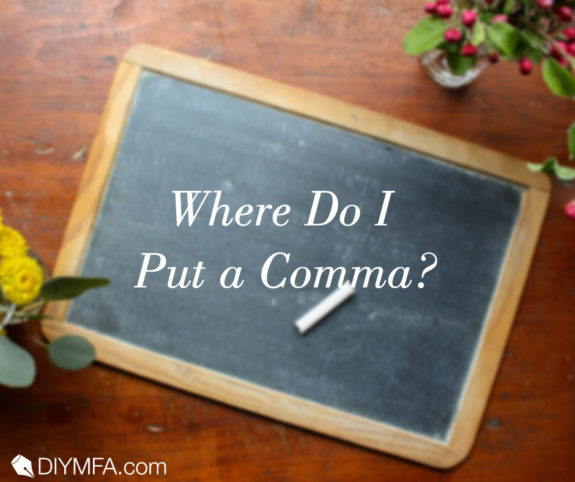The comma is confusing and controversial. Seriously. In 2018, a Maine dairy company had to award $5 million in backpay to drivers—all due to a missing Oxford comma in their contract. If you want to make sure a missing or misplaced comma doesn’t ruin your manuscript, keep reading.
Commas are one of the hardest punctuation marks to understand and use. A simple search for usage brings up myriads of lists with technical grammar terms. Before you sprinkle all those commas in your writing, it’s important to know what they’re doing there.
Let me introduce you to…
The Conjunction
One of the main uses of these punctuation marks is to separate independent clauses joined by coordinating conjunctions (and, but, for, so, or). This means you have two complete thoughts that could stand on their own as individual sentences but are joined instead.
E.g. I went to school, and I ate lunch.
The Serial
There have been songs written about it and literary battles fought over it, but there’s no doubt that the serial comma can be a handy little mechanism. To refresh your memory, the serial comma, often referred to as the Oxford comma, is the mark that comes before the last item in a list of three or more.
E.g. Robert likes dogs, cats, and birds.
Now, before you go debating me, I will gladly concede that there are times where it is inappropriate to have this comma. If the last two items in the list are describing the item before it, then there is no need for a serial comma. In the sentence below, I’m not saying I like three separate things; I’m just saying I like Mike and then describing what he is. In those cases, no need for a serial comma.
E.g. I really like Mike, an animal trainer and circus performer.
The Vocative
If you’re directly addressing someone, it’s good to use the vocative or “direct address” comma.
E.g. Charlie, you’re a really great guy.
The Dialogue
When writing dialogue, you’re going to be using a lot of commas, and it’s important to know exactly when.
A comma always comes before a dialogue tag and remains inside the quotation marks (in American English).
E.g. “I love you,” he said.
If the dialogue tag comes first, you will use a comma and then begin your quoted text with a capital letter.
E.g. Diane says, “Don’t be late for dinner.”
If the dialogue tag appears in the middle of the quoted text, you will use a comma on either side.
E.g. “I just found out,” she exclaimed loudly, “that I won the contest!”
The “Only”
If you want to talk about your dog and you only have one, you would put their name in between two “only” commas.
E.g. My dog, Fido, is the cutest puppy.
If you have multiple dogs and Fido is just one of them, you do not separate the name with a comma.
The Introductory
Many sentences begin with dependent words, clauses, or phrases that need to be set off by a comma. The comma indicates that the introductory part of the sentence (not a complete thought in itself but still important) is concluding, and the main sentence (which can stand on its own) is about to start. This often happens with sentences beginning with an adverb.
E.g. However, that wasn’t to be the case.
E.g. In a short while, I will be going to bed.
The Extraneous Information
In technical speak, you are setting apart a nonrestrictive or nonessential clause within the sentence. In plain speak, you’re just comma-ing off some extra info that won’t change the meaning of the sentence.
How do you determine if something is essential? Try moving it around the sentence or even taking it out. Does that change the meaning? If so, then you don’t need to set that item off in commas.
E.g. My grandfather, who lives in Phoenix, is a spry guy.
Okay, that’s a lot on a single punctuation mark! Is it every single example you might come across? No, definitely not. We didn’t talk about if/then or dates and numbering. But these are still some of the most common uses.
Should you always follow these rules to the letter? Also, no. Sometimes, a sentence may need multiple commas grammatically, but it clogs up the sentence for the reader. In that case, it’s better to go with what feels right. When in doubt, look for the places your mind or mouth (if reading aloud) naturally pauses during the text. This indicates you’ll need a punctuation mark of some sort.
One last caveat. Grammar checkers are pretty good nowadays, but they certainly don’t always get the right commas in the right spots. Don’t blindly accept all suggested comma changes. Think about the rules you’ve learned here and apply your critical thinking to the sentence. The more often you practice, the easier comma placement becomes.
Best of luck to you!

Jeanette the Writer is a freelance editor and writer based in Dallas, TX. When not at the computer, you can find her crafting, teaching a scuba diving class, or posting pictures of cute cats on Instagram. Visit JeanettetheWriter.com for more info and follow @JeanettetheWriter on Instagram and Facebook or @JeanettetheWrtr on Twitter.







